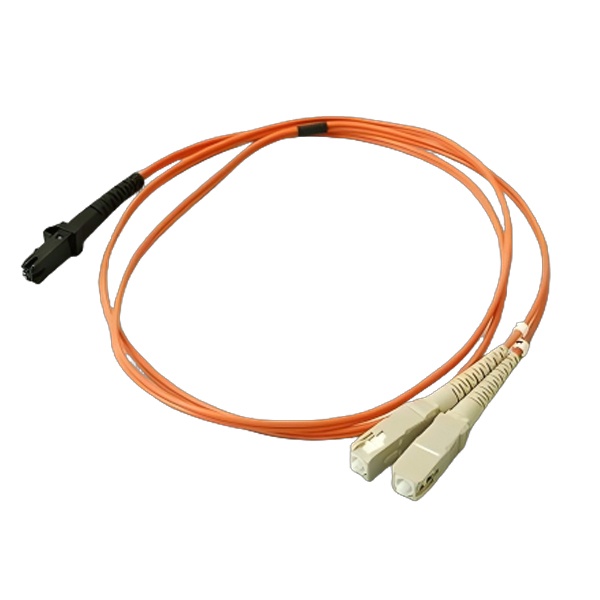MTRJ connector (Mechanical Transfer Registered) is a square fiber optic connector with a dual-core integrated design. Its biggest feature is that a single connector integrates two fibers (transmitter and receiver in one), achieving dual-fiber bidirectional transmission. It consists of a high-precision plastic shell, an internal fiber core, and a push-pull buckle locking mechanism, and is specifically used for active connections in optical links.
MTRJ Connector Types
MTRJ fiber connectors are divided into male and female. Unlike conventional LC, SC, and FC male and female connectors, the MTRJ male connector has two metal guide pins protruding about 1.5 mm on the end face, which are used to accurately align the fiber core diameter when inserting the female connector. The MTRJ female connector has no metal guide pins on the end face, and only retains the alignment holes that match the male guide pins, which are recessed groove structures (female interfaces).
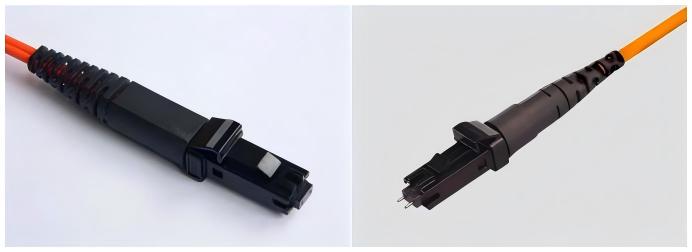
Male connectors are commonly found at both ends of fiber patch cords, such as MTRJ to MTRJ patch cords, LC to MTRJ fiber patch cable, and SC to MTRJ fiber patch cord. The MTRJ ports on switches, optical modules, and adapter panels of fiber accessory racks are all female (without guide pins).
NOTICE: the male and female connectors must be used together (male to female insertion), and the same type cannot be directly interconnected; when connecting, ensure that the raised mark on the top of the male connector is aligned with the groove direction of the female connector to avoid misalignment of the optical fiber.
MTRJ Connector Features
- MTRJ connector is encapsulated with 2 fibers in a square connector, usually duplex patch cord (including optical signal sending and receiving), with an integrated design that significantly saves space and is suitable for high-density wiring scenarios.
- The connector body is a plastic part (non-traditional ceramic ferrule), which is low in cost but weaker in plug-in durability than LC/SC/FC and other types.
- The square interface of the MTRJ fiber connector is similar in appearance to the RJ45 Ethernet interface, and is fixed with a push-pull buckle for easy plug-in and pull-out.
- Some models use a short tail sleeve structure to further save wiring space and are suitable for narrow cabinet environments.
- MTRJ patch cord mainly supports OM1 (62.5/125um) and OM2 (50/125um) multimode fibers, with an insertion loss of less than 0.2dB, and good end-face process and transmission loss control, meeting conventional transmission needs.
- MTRJ fiber connector can be directly plugged into a standard RJ45 panel and is suitable for high-density patch panels and data center cabinets.
MT-RJ Cable Application
Since fiber optic components have been replaced by higher density patch cord duplex lc lc or MPO/MTP solutions in recent years, MTRJ multi mode patch cord are currently mainly used in indoor applications of existing telecommunications and data network systems, such as enterprise local area networks (LANs), computer room patch panels, and other space-constrained environments.
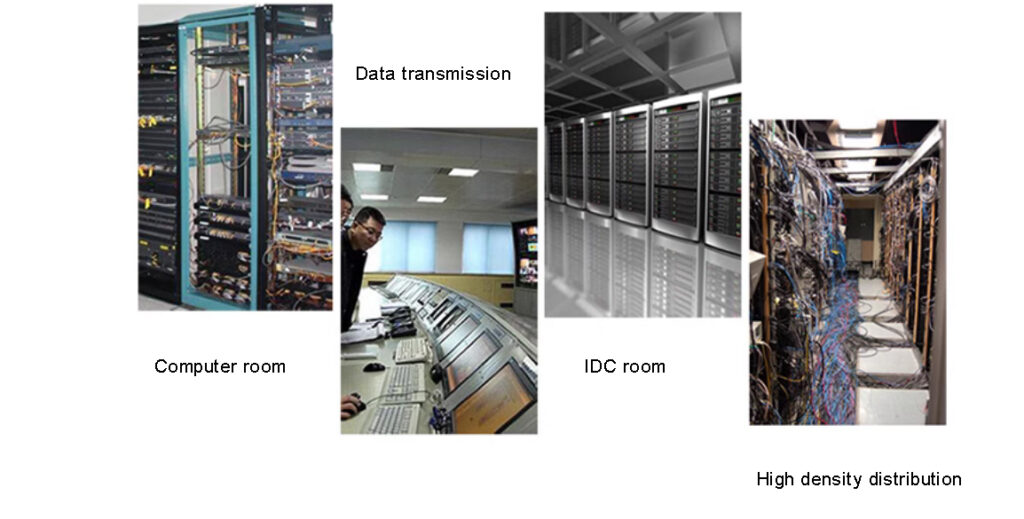
Note: The “RJ” in the name of MTRJ comes from the fact that its interface appearance is similar to the copper cable RJ45 network interface, but the physical structure and purpose of the two are completely different.
MPO Fiber Connection Types
FAQ
What are the characteristics of the MTRJ interface?
A single MTRJ interface integrates two optical fibers (transmit/receive) to achieve duplex communication, saving about 50% space compared to the traditional dual LC connectors. It can be directly inserted into a standard RJ45 panel and is suitable for high-density patch panels and data center cabinets.
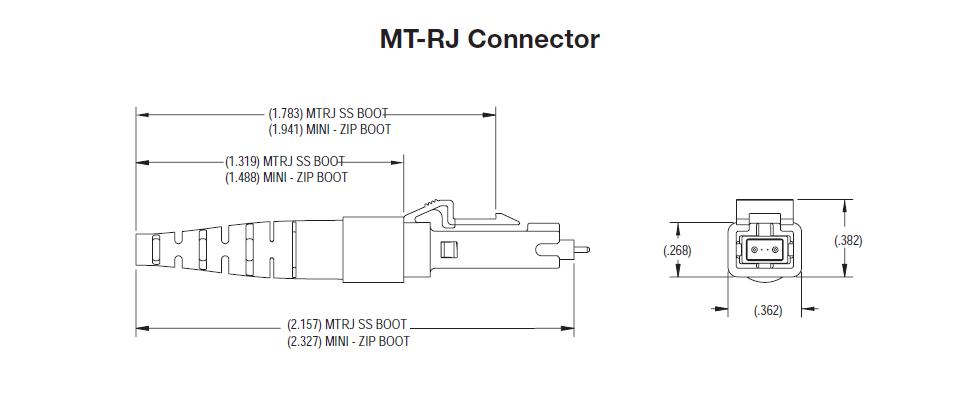
Color identification of MTRJ to MRTJ patch cord
The color identification of MTRJ fiber patch cord mainly follows the general specifications of multimode fibers like below:
| Item | Color | Remark |
| Mtrj cable sheath | Orange (mainstream), gray | OM1 OM2 multimode fiber |
| MTRJ fiber connector housing | Beige, black | Different from the blue housing of single mode patch cord |
| MTRJ connector material | Plastic square, snap-on | Appearance similar to RJ45 interface |
If the MTRJ patch cord is used for OM3/OM4 multimode fiber (supporting 10 Gigabit transmission), its outer sheath may be aqua (OM3) or lake blue (OM4), but such applications are rare.
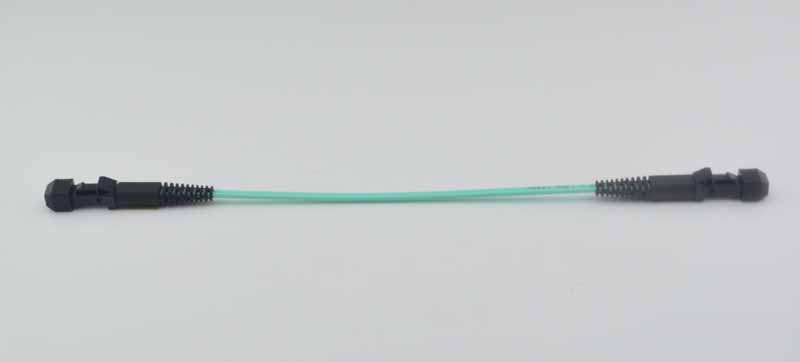
Are there single mode MTRJ cable?
MTRJ only support multimode fiber optic cables (OM1/OM2). Single mode transmission requires special customization and has low stability, not recommend.
The disadvantages of MTRJ fiber connector
The plastic material of MTRJ connector results in slightly lower insertion loss and durability than ceramic ferrule connectors (such as LC/FC/SC/ST etc). Furthermore, in recent years, it has been gradually replaced by higher-density LC duplex patch cords or MPO/MTP solutions.
How to distinguish between MTRJ single mode and multimode fiber patch cable?
MTRJ single mode fiber jumper use yellow cables, while MTRJ multimode fiber optic patch cables usually use orange or gray cables. They can also be easily identified by the printed words on the outer sheath of the optical cable.
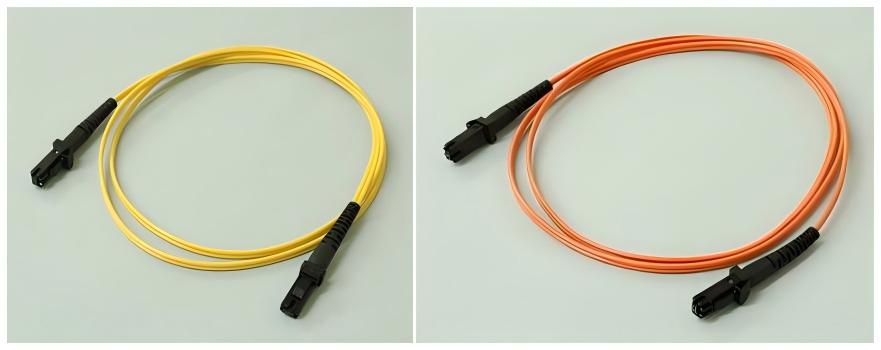
What is the insertion loss of MTRJ fiber jumpers?
MTRJ to MRTJ patch cords are generally multimode fiber jumper, the test light wavelength is 850nm, the insertion loss is generally ≤0.2dB, maximum ≤0.4dB, return loss is ≥35dB. Generally, the change is <0.2dB after less than 500 plug-ins and unplugs, and the mechanical stability is good.


